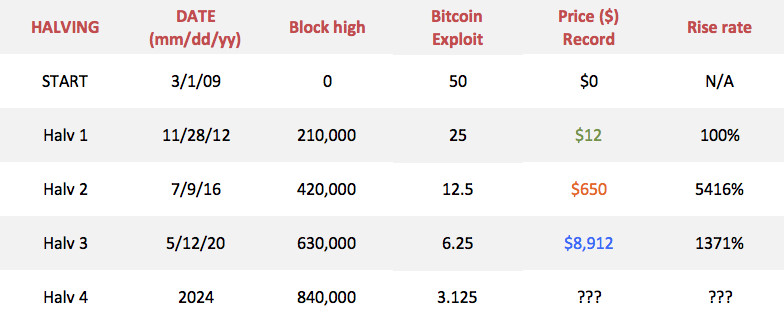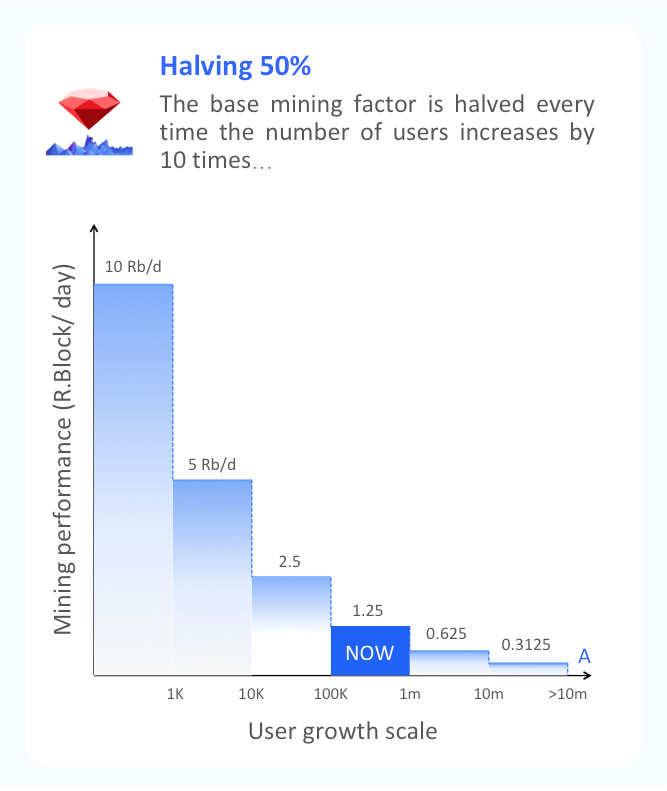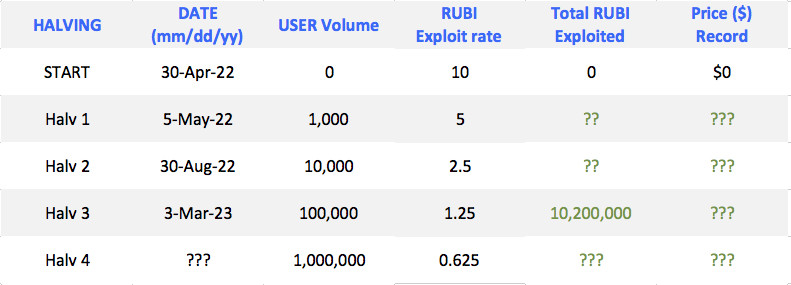HALVING - A special event of digital asset mining networks, only happening with mining able networks, not with tokens, let's learn about the role of this event in 5 minutes.
What is HALVING?
For those who are new to the concept for the first time, a halving is a time when a mining network reduces its mining output in half, thereby reducing the supply of an asset to the market. To better understand, let's take a look at some of the benefits of halving and how the halving happens on networks.
At first glance, the Halving event is synonymous with cutting of mining production, it s like aunhappy news for miners, but in reality veteran miners realize this is a good opportunity that they wait, when the assets they mined will limit inflation, which often leads to an increase in value. (Let's see an example of the Bitcoin price recorded at the time of its halving)

(After Bitcoin Halving it sets an amazing new price)
WHY NEED HALVING
Halving is a concept derived from the famous Bitcoin project, this is a method for this network to reduce inflation. This method has so far proved effective and is increasingly seen as a key feature of mining networks. Halving helps to reduce inflation that creates scarcity, strengthens the uniqueness of the asset, thereby reinforcing the stability of value of a mining-based digital asset.
WHY DON'T TOKEN EXPERIENCE HALVING?
Unlike digital assets issued through mining such as Bitcoin, Eth or Dogecoin, secondary assets are issued once through Smart-Contract, so there is no need to go through the Halving process. It is issued in its entirety once on the network of a coin with a fixed number called "Total Supply". To stabilize the value of Tokens, it is usually through Tokenomic rules that are clearly defined as soon as they are issued, in which they apply methods such as restricting transactions, gradually unlocking or burning them during use.
SOME "Laws" HALVING
There are several types of halving rules that we may encounter in coin projects that have appeared in the past.
• Halving by block height: This simple rule is based on the block counter, until a certain number of Halvings will occur, typical for this rule is Bitcoin, this network will have a Halving every 210,000 blocks. .
• Halving by operating time: This is a rule that determines the linearity of time, the timer is fixed when the network will have a Halving.
• Halving according to the number of assets generated: This rule helps coins to precisely control the number of assets generated and set plans and strategies for price stability based on the total circulating asset index.
RUBI HALVING Rules:
Unlike the popular concept of electronic money in the form of a coin, Rubi is defined as a resource, a type of digital commodity born by human behavior. This is a new and independent concept from the very familiar Coin concept. Commodities are consumable in their own application, while money is not designed to be consumable in use.
Due to the nature of commodity and born by mining based on user behavior, the number of assets put into circulation depends on the number of miners participating in mining. To limit the oversupply, Rubi adopts a rule that reduces performance as the number of miners increases. In fact, this theory is similar to resource mining in nature, if many miners are mining the same resource, competition will arise and the efficiency obtained for each individual will decrease.

(Rubi network halving plan based on user growth)
RUBI'S HAVING HISTORY
Since its launch, Rubi has gone through 3 Halvings (see table below)

RUBI Team







Comments (50)
AQSAHASSAN
Hi
0 Trả lời Chia sẻ 16:39 07/08/2023
0 trả lời
jitendra
Hi
0 Trả lời Chia sẻ 15:00 21/07/2023
0 trả lời
Moking06
How to get the free 1,500
0 Trả lời Chia sẻ 12:08 19/07/2023
0 trả lời
Moking06
Hi
0 Trả lời Chia sẻ 12:08 19/07/2023
0 trả lời
waqar1234
hi
0 Trả lời Chia sẻ 08:32 19/07/2023
0 trả lời